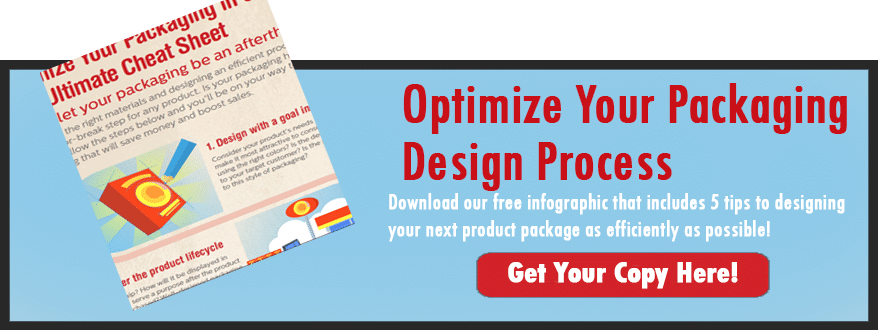How To Gas Flush Pouches For Food Packaging
Are you looking for information on gas flushing? Interested in how it works and if it is right for your food packaging applications? Perhaps you are a long-established food packaging organization or a restaurant startup looking to enter food distribution through supermarkets. Either way, you have come to the right place.
Gas flushing is a process used in a type of food packaging called modified atmosphere packaging. It is used to alter the inside of a special type of pouch that is used to package certain types of foods.
When it comes to preserving food, modified atmosphere packaging has become rather popular as a food packaging process. The use of modified atmosphere packaging helps to keep food fresher and more aesthetically pleasing for extended periods.
If you found your way here, you’re probably researching gas flushing for pouches. You’re planning on packaging some type of food product in a pouch and are curious if gas flushing pouches might be right for your products.
You’re not sure if the investment required for gas flushing makes sense for you. Industrial Packaging has been helping clients in the food industry for many years. We have helped hundreds of companies understand the process, machinery, and materials involved in applications of modified atmosphere packaging such as gas flushing pouches.
In this article, we will give you a rundown of everything you need to know about gas flushing. You’ll learn how gas flushing for pouches works, what is required to do it, and what types of food are most commonly packaged in gas flushed pouches. By the end of this article, you’ll be able to determine if gas flushing is the right call for your packaging line.
What Is Gas Flushing?
Gas flushing is a process in which various types of inert gas (most commonly nitrogen) or other gases are injected inside, sucked out, and re-injected repetitively to remove oxygen from food packaging. Gas flushing is the most common type of modified atmosphere packaging. Gas flushing is done to improve the shelf life of the product contained within.
What Is Modified Atmosphere Packaging?
Gas flushing is a type of modified atmosphere packaging, but what exactly is modified atmosphere packaging (also known as "MAP")?
Modified Atmosphere Packaging is the practice of causing a change in the atmosphere in a package to help preserve the food contained within (IE: poultry, beef, pork, fish). The ultimate end-goal of this type of food packaging is to increase the shelf life of your food products.
Foods such as cheese, poultry, fish, and other perishable food items are often packaged with MAP applications such as gas flushing. Check out the video below to better understand the process of gas flushing.
When Should You Use Gas Flushing?
When implementing modified atmosphere packaging, the oxygen present inside of the packaging is generally reduced to three percent (and in some cases even less).
Without getting too deep into the science behind it, the gases used for modified atmosphere packaging are generally denser than oxygen gas. Because of this, the oxygen inside of the packaging is pushed outside when these other gases are flushed into the package.
Some benefits of gas flushing include: increased shelf life, protection against discoloring, and an added layer of protective packaging. The gas itself acts as a buffer to the products contained within the gas flushed packaging. For clarification on what buffer means in this context, the gas prevents things from coming into contact with or harming the product contained within.
Most gas flushing applications mandate very precise gas formulations. For example, certain types of meat packaging will often require a combination of carbon dioxide/monoxide and nitrogen. This formulation of gases is commonly referred to as "tri-gas."
Nitrogen is used to surround the product inside of the package. The carbon dioxide acts as an antimicrobial agent. In contrast, carbon monoxide is a stabilizer for the meat and prevents it from discoloring.
Need Help Designing Your Packaging?
Gasses Commonly Used For Gas Flushing Pouches
Argon
Argon has the same properties as nitrogen. It is mostly used in applications for inhibiting enzymes, mold, and chemical reactions. It is a common choice for applications that cannot utilize nitrogen. The presence of argon reduces respiration and the metabolization of unwanted chemicals.
Nitrogen
N2 gas is commonly utilized for removing the air and oxygen gas inside of a package.]The majority of modified atmosphere packaging applications for snack food is nitrogen. For this purpose, N2 is primarily used to prevent or reduce the presence of oxygen inside the package.
Carbon Dioxide
CO2 prevents the growth of various forms of mold and bacteria. For the most part, the more CO2 inside the pouch, the greater extension to shelf-life.
Now, carbon dioxide can be absorbed into fat and water; however, most types of food tend to absorb carbon dioxide gas. Too much carbon dioxide in modified atmosphere packaging may result in changes in flavor to the food contained inside.
The goal here is to use enough CO2 to extend the desired shelf-life without causing adverse effects on the food being packaged. The amount of carbon dioxide required to package your food is case sensitive.
How To Implement Gas Flushing On Your Packaging Line
If you are interested in implementing gas flushed pouches for your food packaging applications, you will want to make sure that you have everything you need for the process. Gas flushing requires a vacuum sealer, different gases, and pouches.
Pouches
The pouches can be purchased from any flexible packaging supply company. If you already have a vendor for your materials, it would make sense to reach out to them first.
If you do not already have a vendor for pouches, you will want to compare prices from a few different vendors for the pouches that are appropriate for your products.
To figure out which type of pouch is correct for your product, you will want to speak with a packaging expert to discuss the unique aspects of your product. When they know things like the shape, size, and weight of your food items and the number of products you plan to pack daily, you can get a real recommendation on the best pouch for you.
Gases
As for the inert gases required for gas flushing and other types of modified atmosphere packaging, you will need to speak directly with a gas provider. Most of the time, these items are not available directly from your packaging vendor.
While you cannot usually buy inert gases from a packaging vendor, your rep from your chosen packaging vendor will likely have references to gas companies that can supply the gases that you will require for your gas flushing applications.
Vacuum Sealer
When it comes to sourcing the pouches and the vacuum sealer required to fill them, you will want to research a few different makes and models of sealers from at least two or three different vendors.
The type of sealer that you need is going to be based upon the type of products you are packaging and the volume of products you are sealing daily.
More On Modified Atmosphere Packaging
If you are not sure where to start, consider doing more research on modified atmosphere packaging. Getting a better understanding of how this process works will help you to identify if MAP packaging (such as gas flushing) is the best choice for the packaging of your food products.
About Nathan Dube
As the Digital Marketing Specialist at Industrial Packaging, I am honored to create content for such a phenomenal company and work with one of the greatest teams in the Packaging Industry. Whether creating a video, writing blog posts or generating other pieces of content and multimedia, I am always excited to help educate and inspire our prospects and clients to reach their highest potential in regards to their packaging processes and needs.




